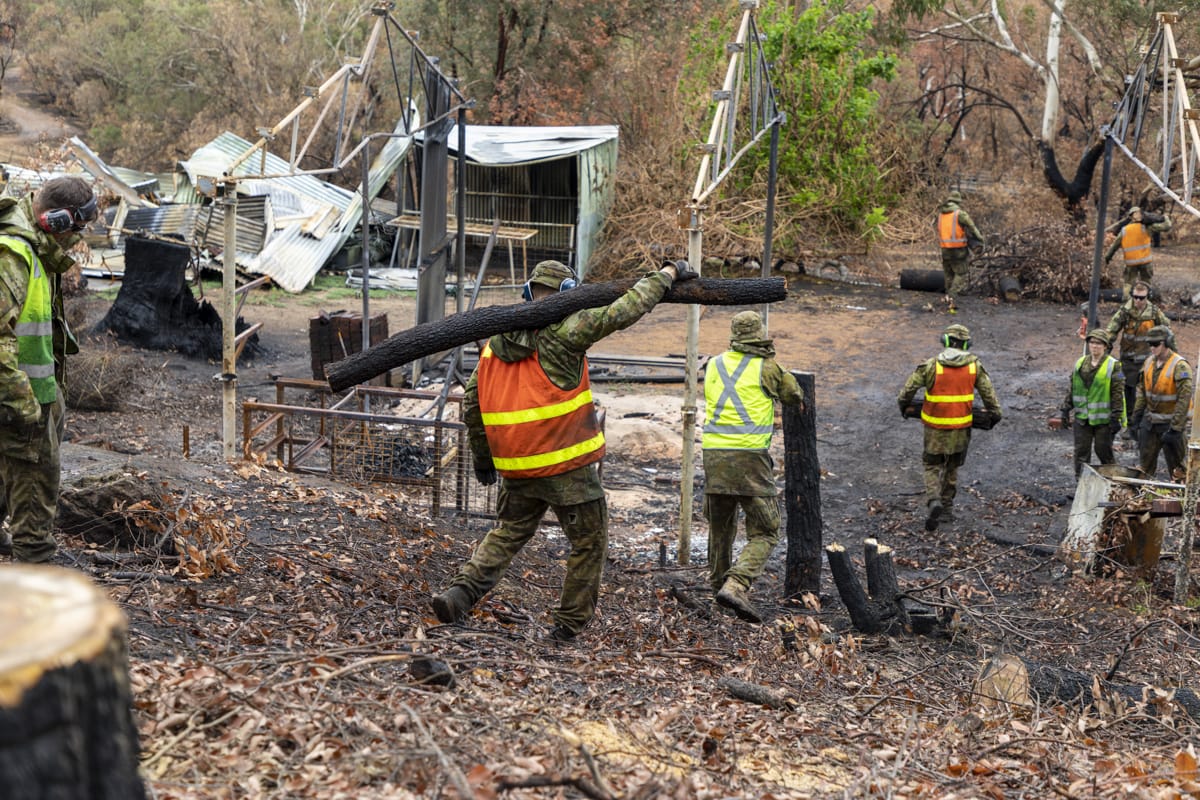Spurred by British Prime Minister’s Rishi Sunak’s unexpected election promise to re-introduce a form of national service in the United Kingdom, a range of voices in Australia have suggested Australia could do with something similar. Retired Major General Mick Ryan, who pre-empted Sunak by a day, is perhaps the most prominent: “Frankly, I don’t think the all-volunteer force is going to help us anymore”.
But Australia’s own experience with national service – at least in its military conscription versions – offers some enduring lessons. Alas, these lessons don’t bode well for a conscription redux in Australia.
Four problems are salient.
In the first instance, it isn’t clear how the Australian Defence Force would train conscripted cohorts, at least without deleterious effects on the professional force. The Australian Army is roughly the same size as it was in the mid-1960s. This force was stretched to the limits training and leading a mere 8,000 National Servicemen every year. While this annual intake allowed an expansion from four to nine battalions it did not solve pre-existing shortages of officers, NCOs or specialists. These shortages put a hard ceiling on further expansion and severely taxed the rest of the army.
And the emphasis on the Army is deliberate: it’s difficult for the Air Force and Navy to gainfully employ conscripts. You can access a broader pool of the nation’s talent but have nowhere near the time needed to make them aircraft mechanics or submariners.
Second, it isn’t clear how the ADF would properly equip a large pool of trained reservists – typically one of the benefits of national service. For example, 30,000 conscripts might be trained annually, providing a reserve pool after five years of 150,000. The ADF certainly doesn’t have the stocks to fit such a large body with modern equipment and weapons. A parliamentary inquiry in 2000 concluded that issues of cost and obsolescence made pre-emptively acquiring equipment for an expanded force non-viable. The experience of 1939–41, when Australia’s military expanded dramatically, demonstrated the folly of raising large bodies of men without material: you end up with units training with wooden Bren guns, and a nominally large force in reality unprepared for operations.

Third, the politics of national service are profoundly difficult. Advocates often point out that Australia’s history with national service is broader than the incredibly divisive First World War referenda and the Vietnam-era scheme, and this is true. There were compulsory training schemes in 1909–29, 1939–45 and 1951–59. It’s also often observed that schemes in places such as Norway enjoy broad support. That’s also true – arguably underpinned by Scandinavian and Baltic countries’ historical experience with very proximate Russian (and German) aggression. Moreover, some schemes, such as that of 1951–59, did not create public opposition precisely because they asked little of those involved and hence provided almost no military value.
The fourth issue is perhaps the most serious: what would this be for, exactly? The Ukraine-Russia has become a touchstone in this discussion, with analysts such as Ryan drawing a link between Ukraine’s personnel travails in the grinding fight against much larger Russian aggressor and a prospective Australian crisis. But it isn’t clear how that experience translates to the Australian context.
In the British case, perhaps the mistake is taking the proposal too seriously in the context of a likely looming electoral disaster for the Conservative Party.
Australia last introduced National Service because it believed that it faced the imminent prospect of fighting three land wars simultaneously (in Vietnam or elsewhere in mainland Southeast Asia, in Malaysia, and in the then-Territory of Papua and New Guinea). Almost 60 years later Australian strategy is clear that, though regional circumstances have deteriorated for Australia, the central concern lies away from our own shores in the maritime domain.* Nor is it clear how a national service scheme would enable the ADF or whole-of-nation to compete more effectively in the near region.
These training and equipment issues, alongside the country-specific issues of strategic utility, mirror the rejection of Sunak’s scheme by senior retired British officers. One described it as “bonkers”, and another politely noted that: “The costs of this would be considerable in terms of trainers and infrastructure. This task cannot just be imposed on the armed forces as an extra thing to do.” In the British case, perhaps the mistake is taking the proposal too seriously in the context of a likely looming electoral disaster for the Conservative Party.
This is not a new discussion in Australia. Respected former Labor MP and army officer Mike Kelly called for a civil service scheme in the wake of the Black Summer fires. ANU Professor John Blaxland has been vocal in advocating for his “AUSNACS” proposal for some time now, and former defence force chief Admiral Chris Barrie has similarly proposed his “AUSS+IE”. These are all nuanced proposals, none of which are traditional or narrow conscription schemes, and all try to balance military, civil and community requirements while threading the needle of difficult politics. But major problems remain. It isn’t clear, for instance, how any scheme works if it isn’t compulsory, and compulsion is the politically poisonous element.
There is unambiguously a need to find a better way forward for Australia’s disaster response, volunteer and defence workforces. And having a “mobilisation framework” – language that Ryan and others have also used – makes sense. The country and Defence clearly should have plans for the very worst possibilities. But it isn’t at all clear that “national service” is the answer for Australia.
* The section of the article has been updated following publication to clarify the argument.

